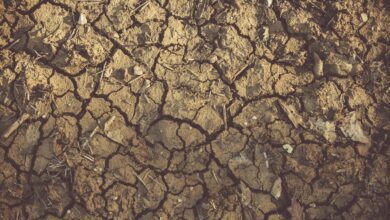The Devastating Consequences: The Effects of War on the Environment

Introduction to the effects of war on the environment
The environmental impact of war is a complex and multifaceted issue, with far-reaching consequences that can linger long after the conflict has ended. From the release of toxic chemicals and the destruction of natural habitats to the depletion of natural resources and the disruption of fragile ecosystems, the environmental toll of war is a sobering reality that demands our attention.
Environmental damage caused by wartime activities
The environmental damage caused by war can take many forms, ranging from the immediate and visible to the more subtle and long-lasting. The use of heavy artillery, airstrikes, and other military equipment can lead to the destruction of vegetation, the contamination of soil and water, and the displacement of wildlife. The construction of military bases and the movement of troops and vehicles can also contribute to the degradation of the natural environment.
Air pollution and its impact on health
The burning of fossil fuels, the use of incendiary weapons, and the release of toxic chemicals during war can all contribute to significant air pollution. This can have a devastating impact on human health, leading to respiratory problems, cardiovascular diseases, and even cancer. The effects of air pollution can be particularly severe for vulnerable populations, such as children and the elderly.
Water pollution and its consequences for ecosystems
War can also have a devastating impact on water resources, with the contamination of rivers, lakes, and groundwater supplies posing a serious threat to both human and animal life. The use of chemical weapons, the release of oil spills, and the destruction of water treatment facilities can all contribute to the pollution of water sources, leading to the disruption of aquatic ecosystems and the depletion of vital resources.
Soil degradation and its long-term effects
The impact of war on soil can be equally devastating, with the use of heavy machinery, the detonation of explosives, and the release of toxic substances all contributing to the degradation of the land. This can lead to the loss of arable land, the disruption of agricultural productivity, and the long-term contamination of the soil, with consequences that can last for decades or even centuries.
Destruction of wildlife and biodiversity loss

War can also have a devastating impact on the natural world, with the destruction of habitats, the displacement of wildlife, and the disruption of delicate ecosystems all contributing to the loss of biodiversity. The use of defoliants, the construction of military infrastructure, and the hunting and poaching of animals during times of conflict can all contribute to the decline of wildlife populations and the erosion of biodiversity.
Deforestation and its contribution to climate change
The environmental impact of war can also extend beyond the immediate conflict zone, with the destruction of forests and the disruption of natural carbon sinks contributing to the acceleration of climate change. Deforestation, often driven by the need for timber, the construction of military infrastructure, and the displacement of populations, can have far-reaching consequences for the global climate.
Depleted resources and the challenges of post-war reconstruction
The environmental impact of war can also have significant economic and social consequences, with the depletion of natural resources and the destruction of infrastructure posing significant challenges for post-war reconstruction and development. The need to rebuild roads, bridges, and other critical infrastructure can further strain the environment, while the scarcity of resources can exacerbate existing tensions and lead to conflicts over access to land, water, and other vital resources.
International efforts to address the environmental impacts of war

In recent years, there have been growing efforts to address the environmental impact of war on a global scale. International organizations, such as the United Nations Environment Programme (UNEP) and the International Committee of the Red Cross (ICRC), have been working to raise awareness of the issue and to develop strategies for mitigating the environmental damage caused by armed conflict.
These efforts have included the development of international treaties and conventions, the implementation of environmental protection measures during armed conflicts, and the provision of assistance for post-war environmental rehabilitation and reconstruction. However, much more needs to be done to address the scale and complexity of the problem.
Conclusion: The urgent need for peace and environmental protection
The environmental impact of war is a sobering reality that demands our attention and action. From the immediate destruction of natural habitats to the long-term consequences of soil degradation, air pollution, and climate change, the environmental toll of armed conflict is a pressing global issue that must be addressed.
Together, we can work towards a future where peace and environmental protection go hand-in-hand.




